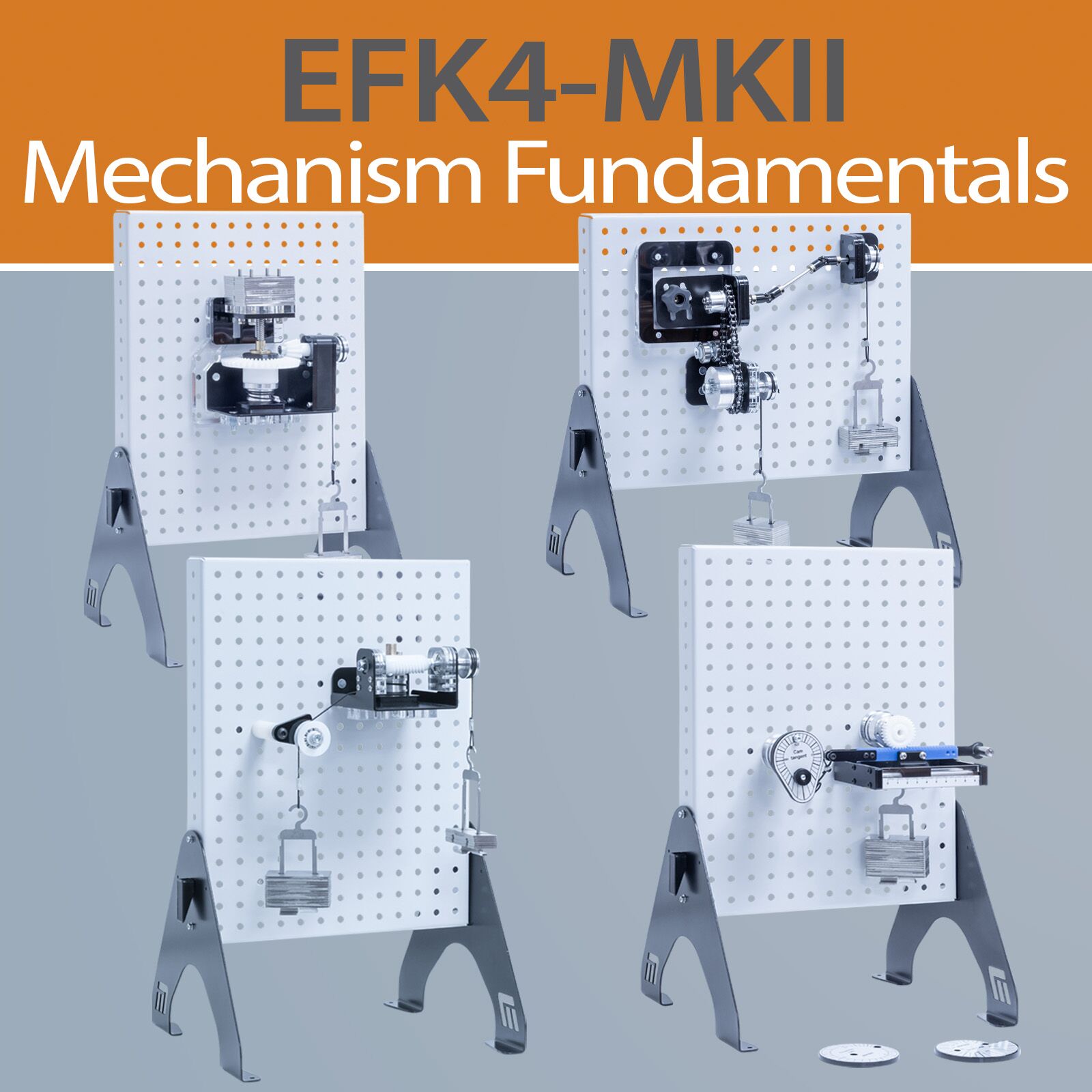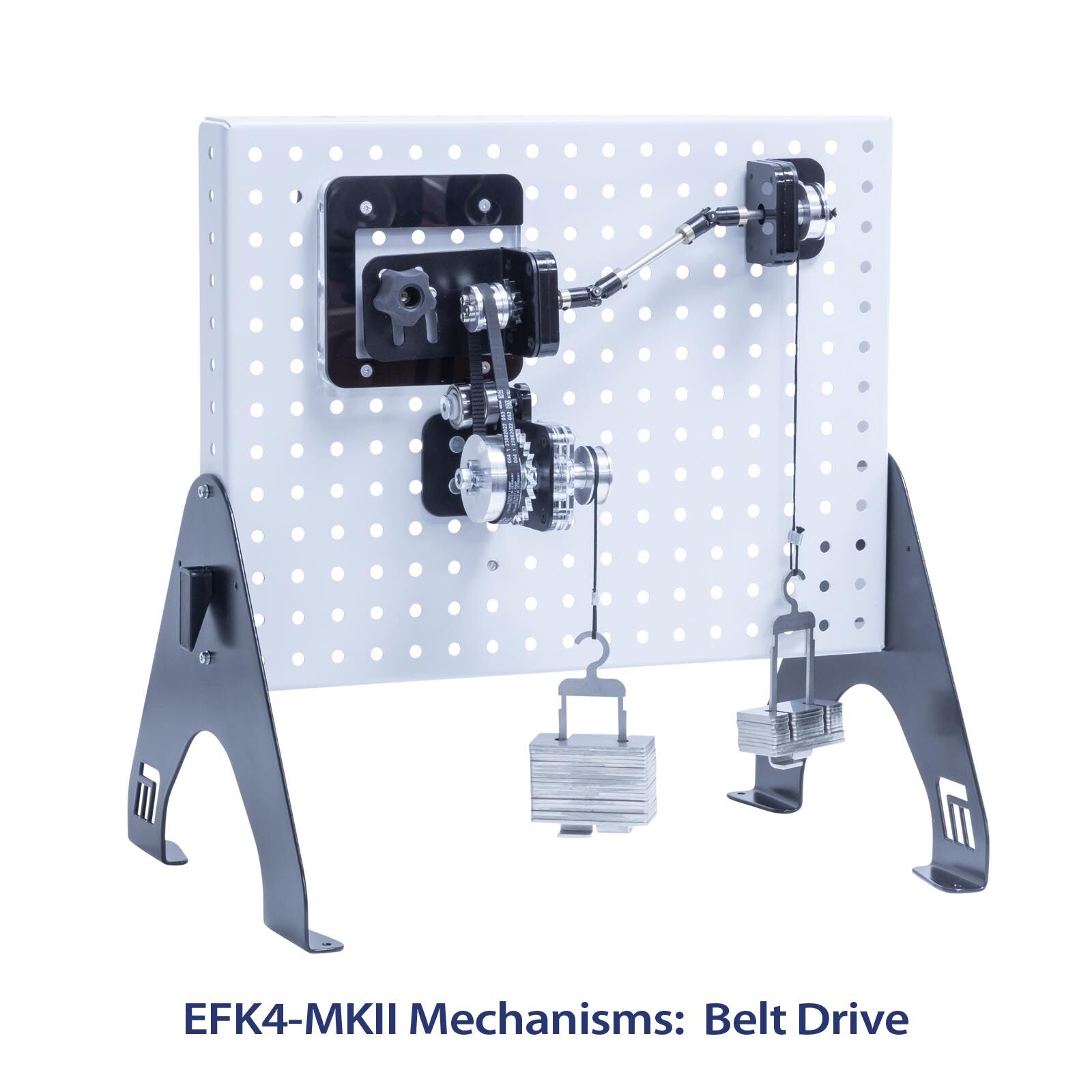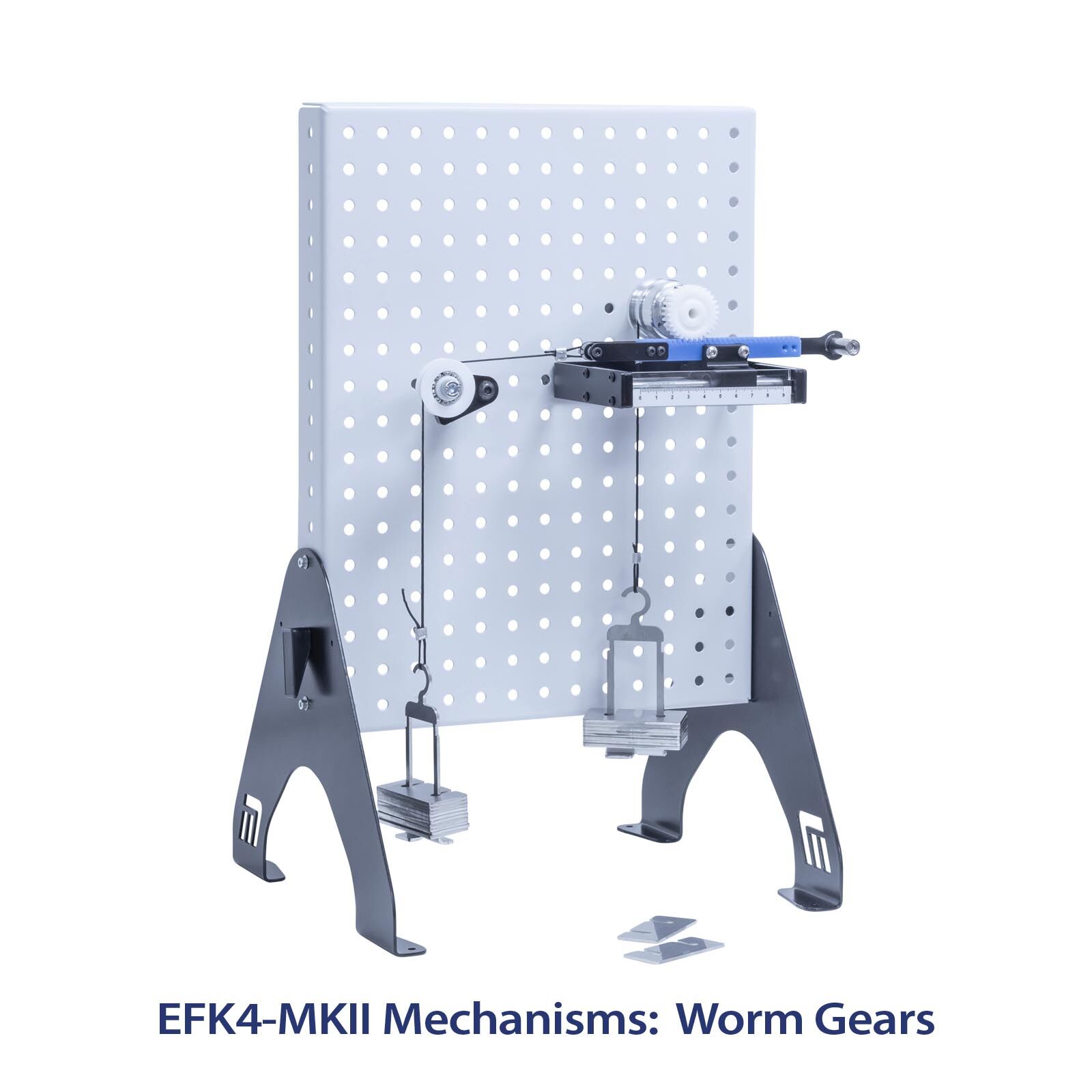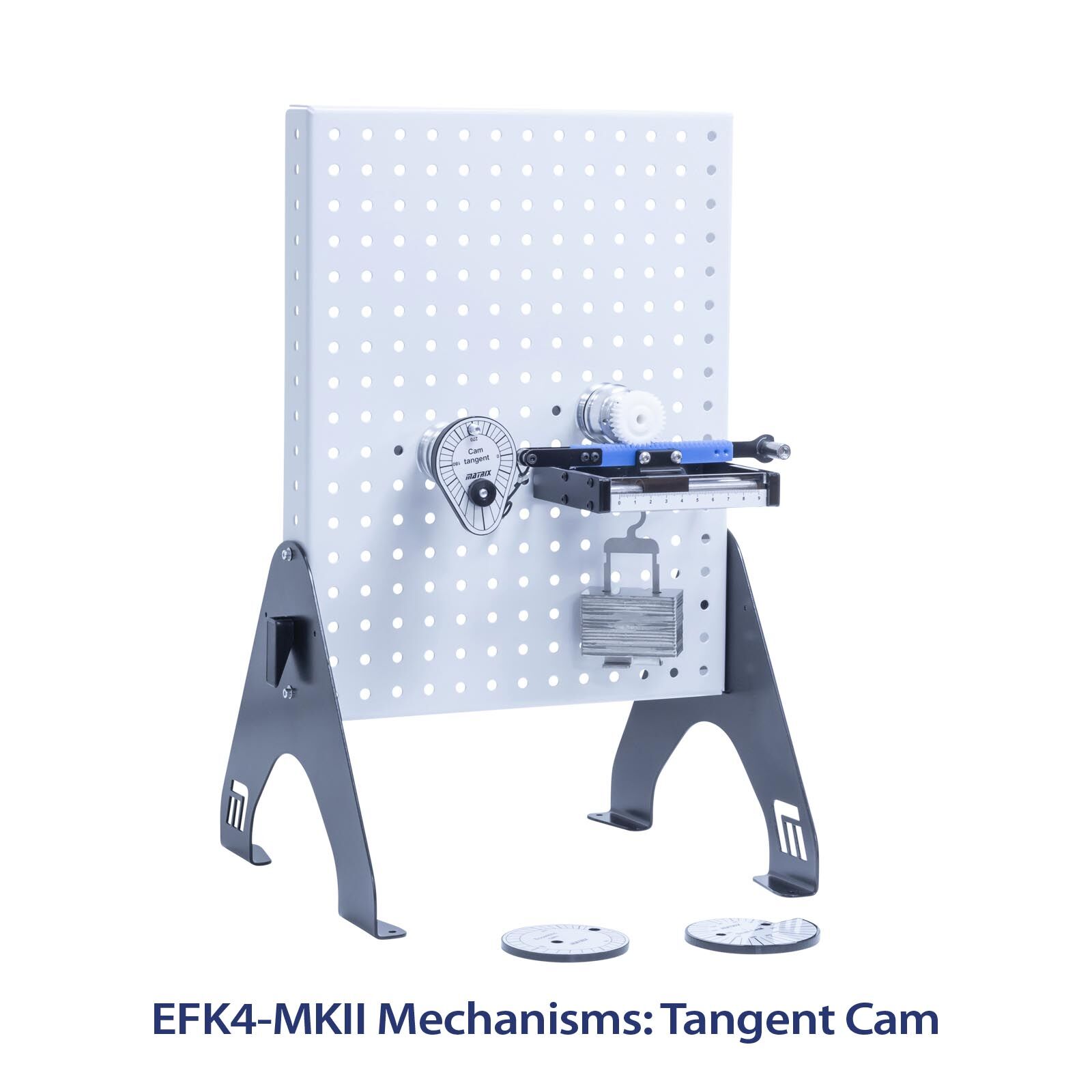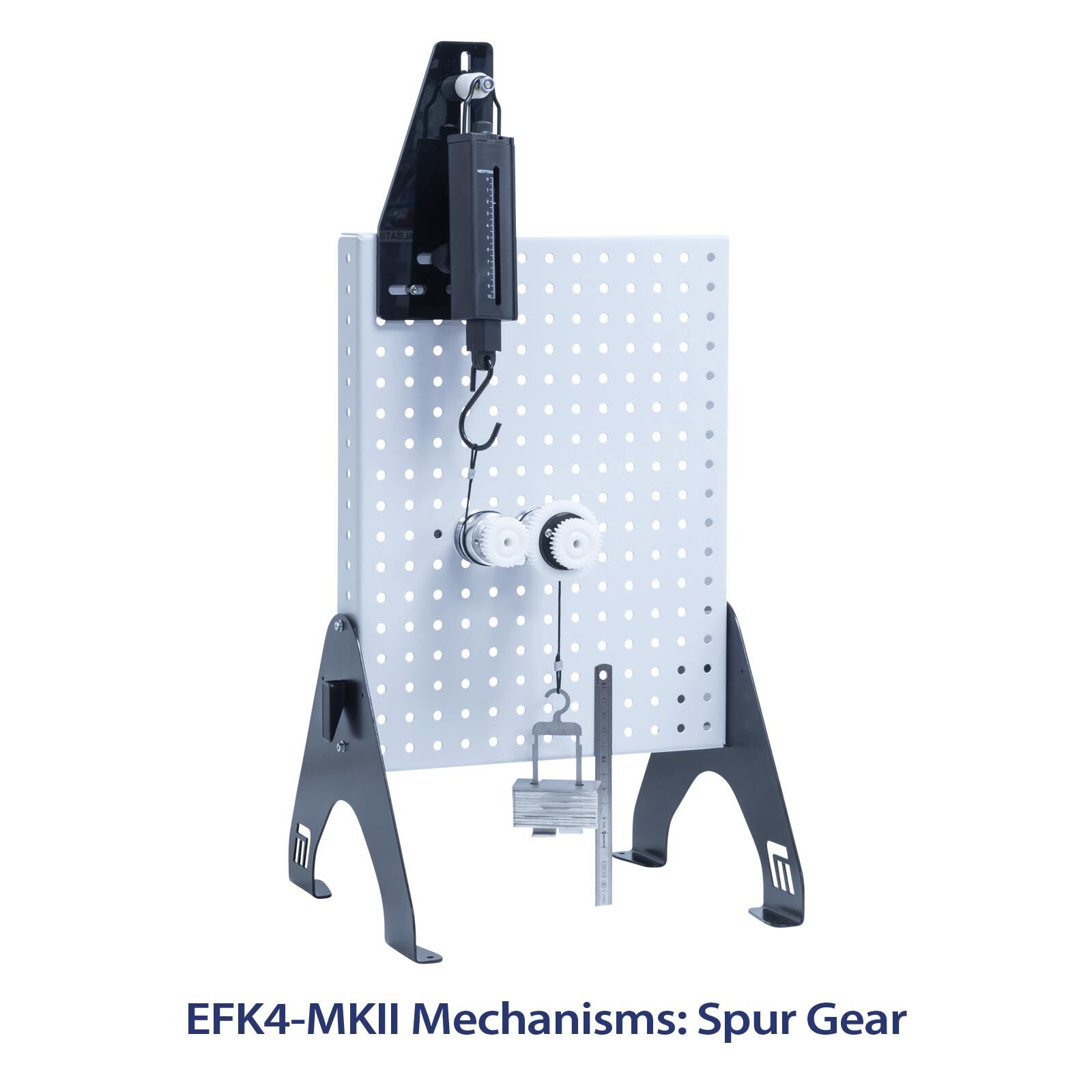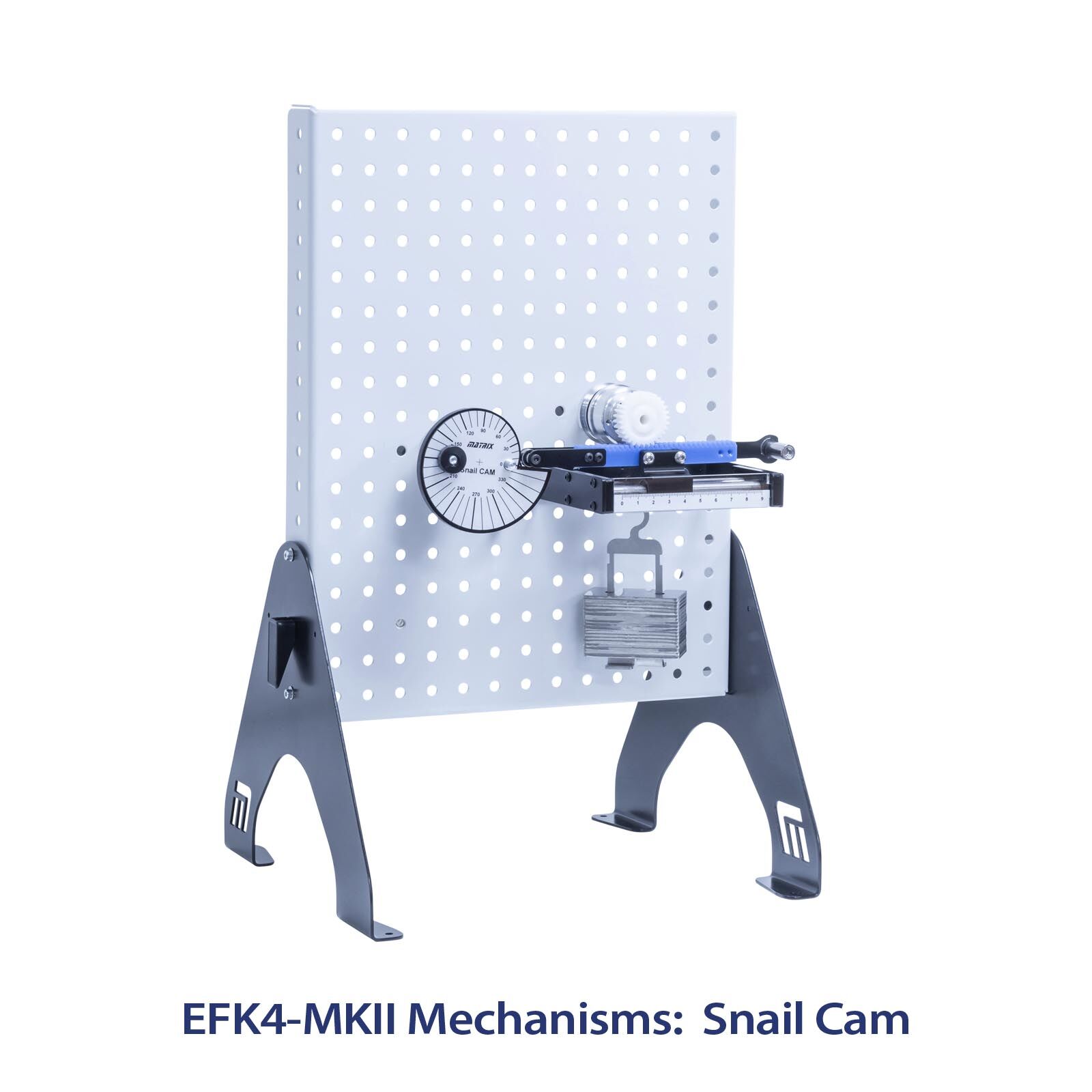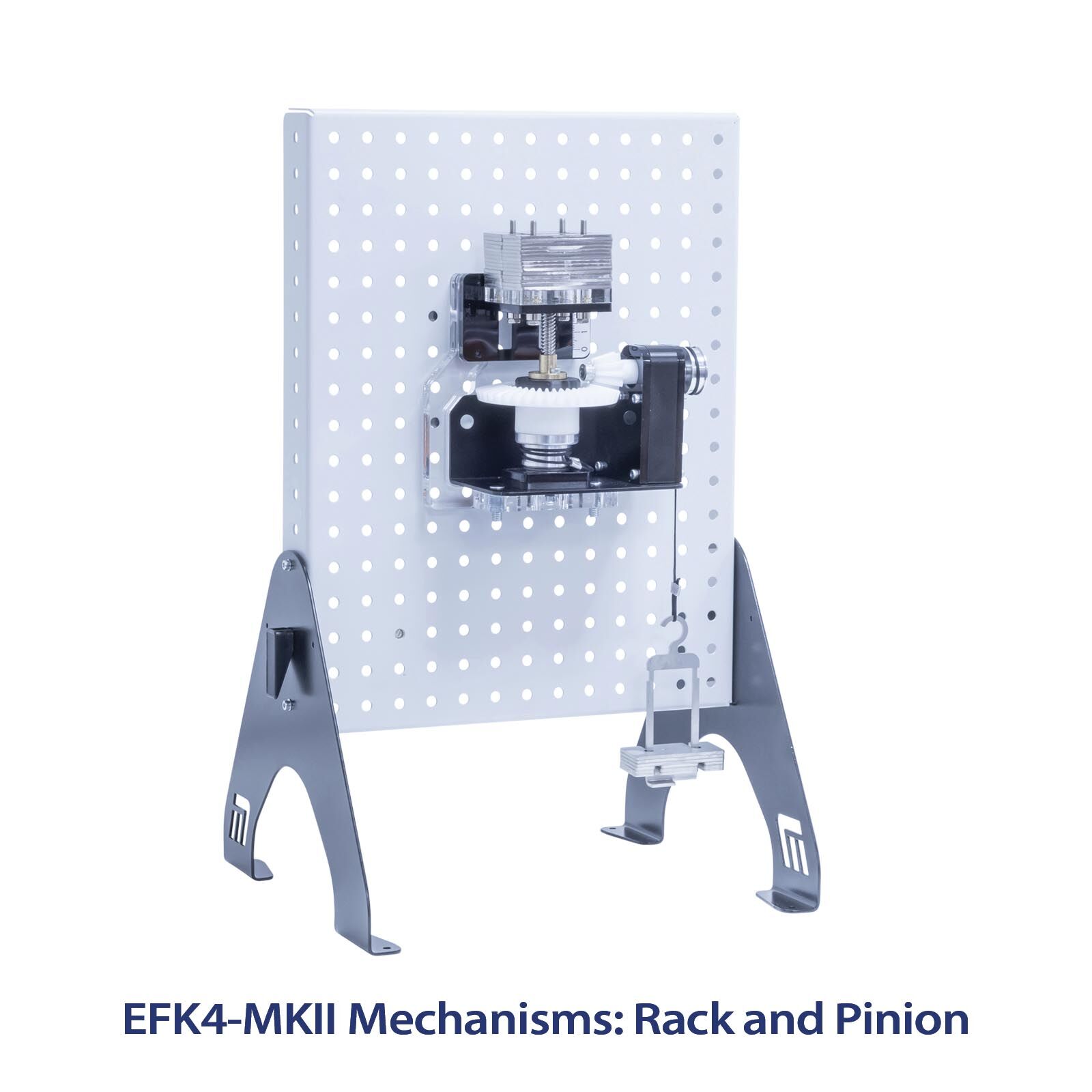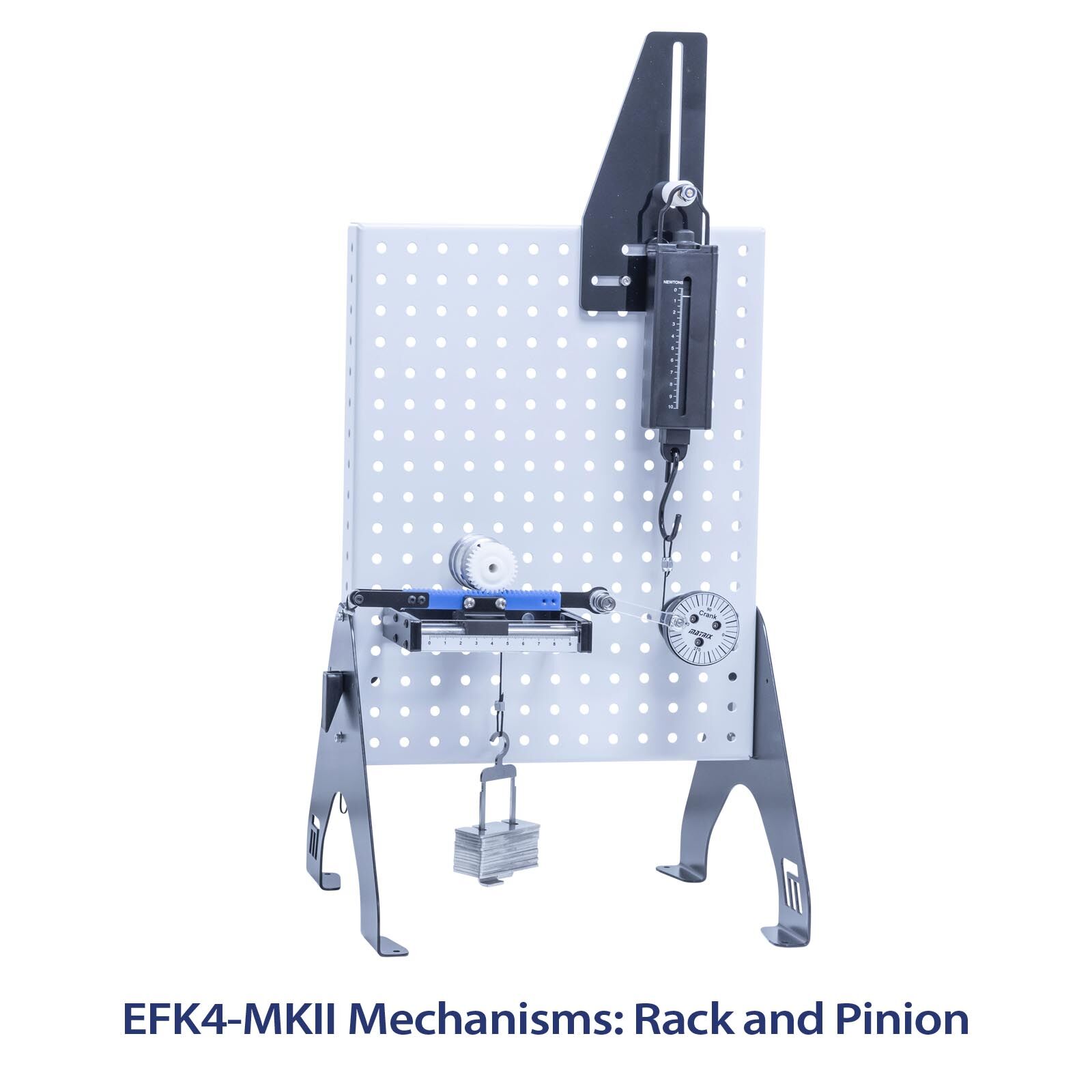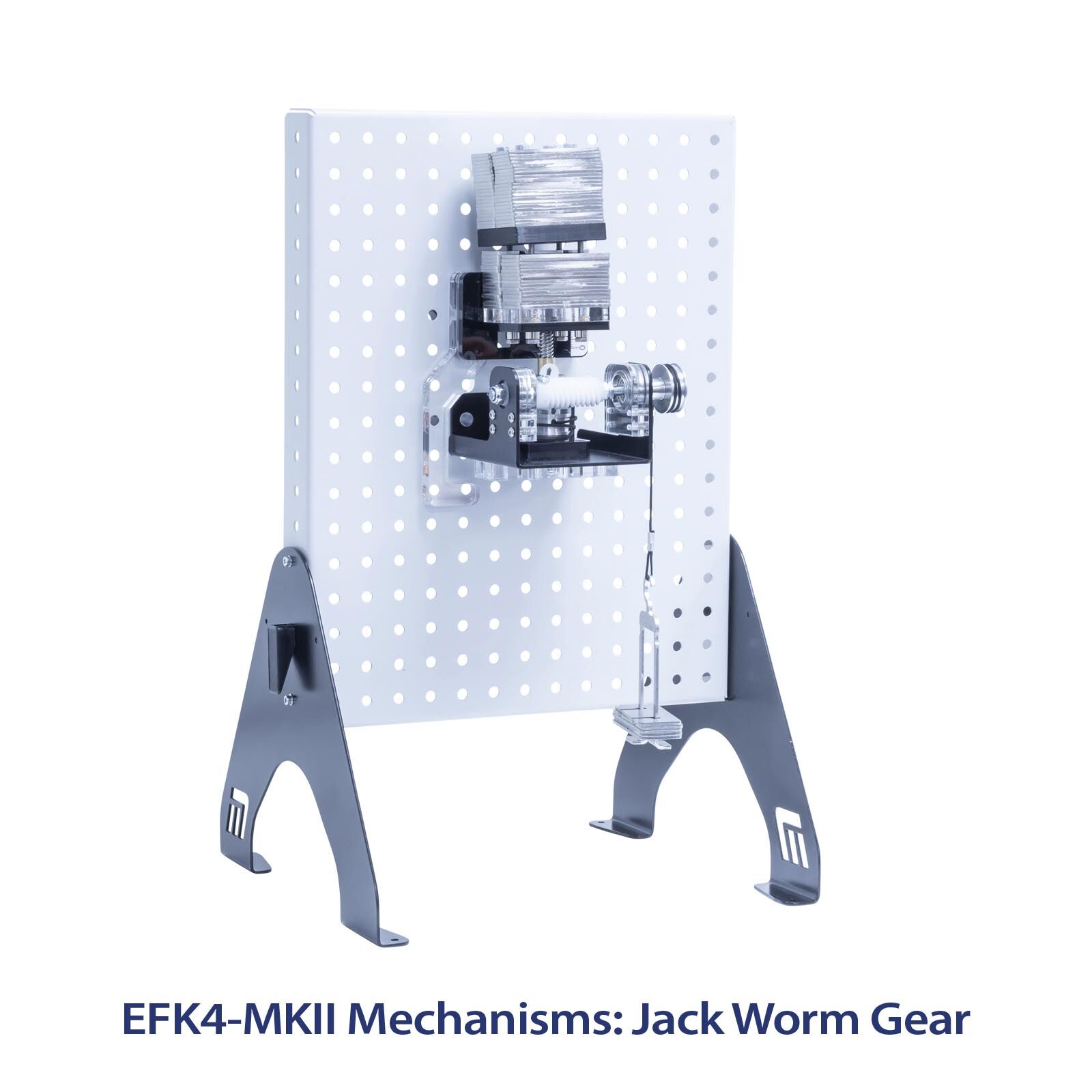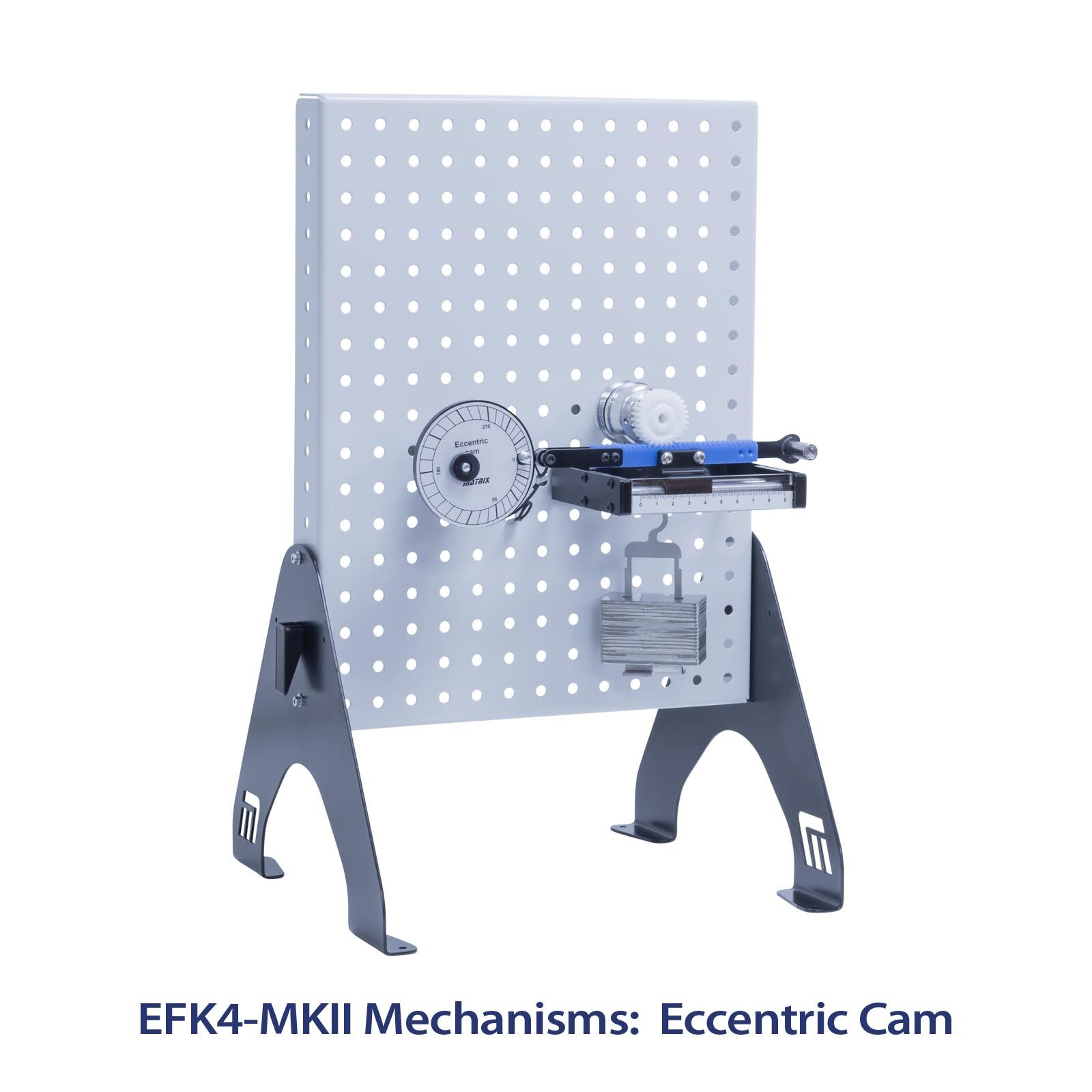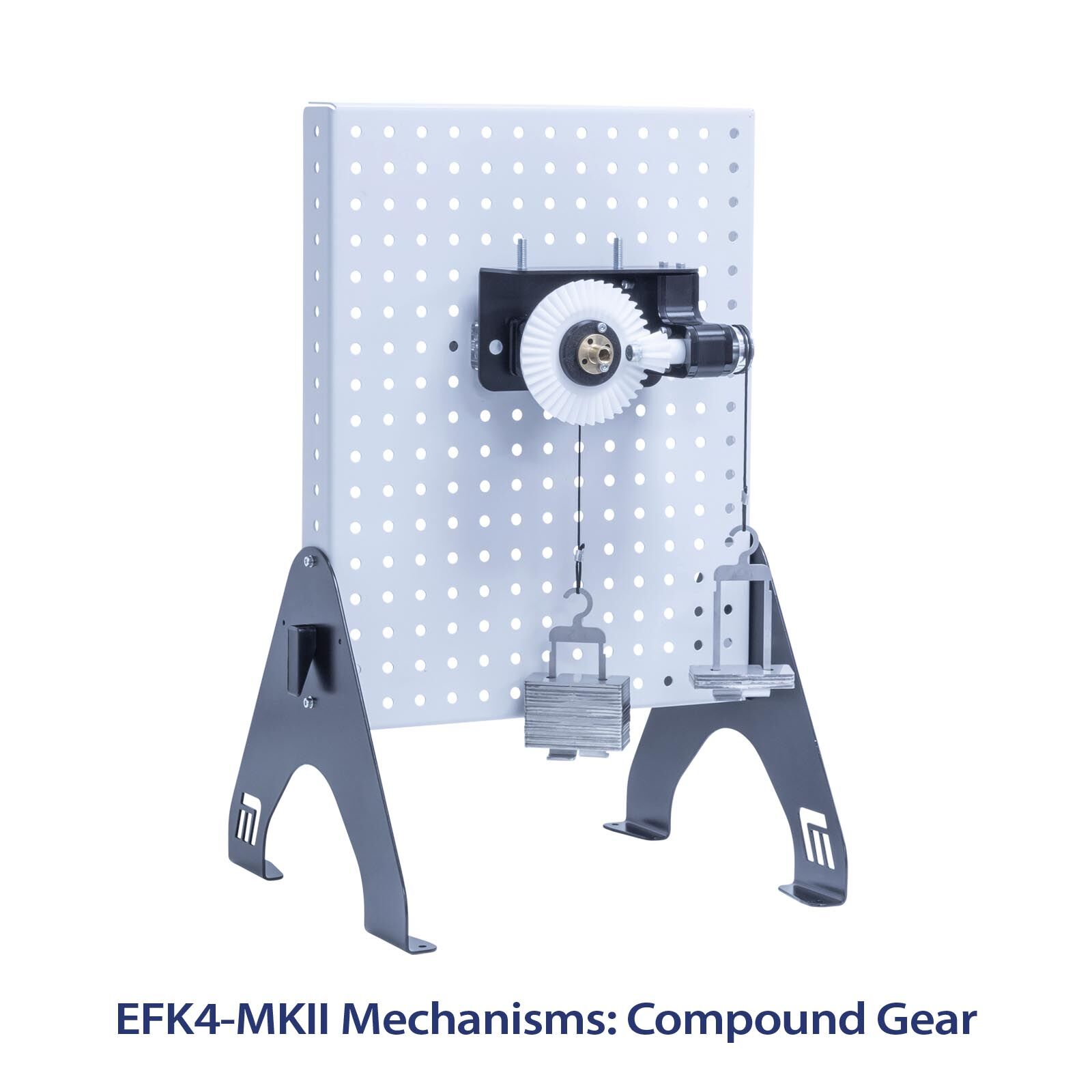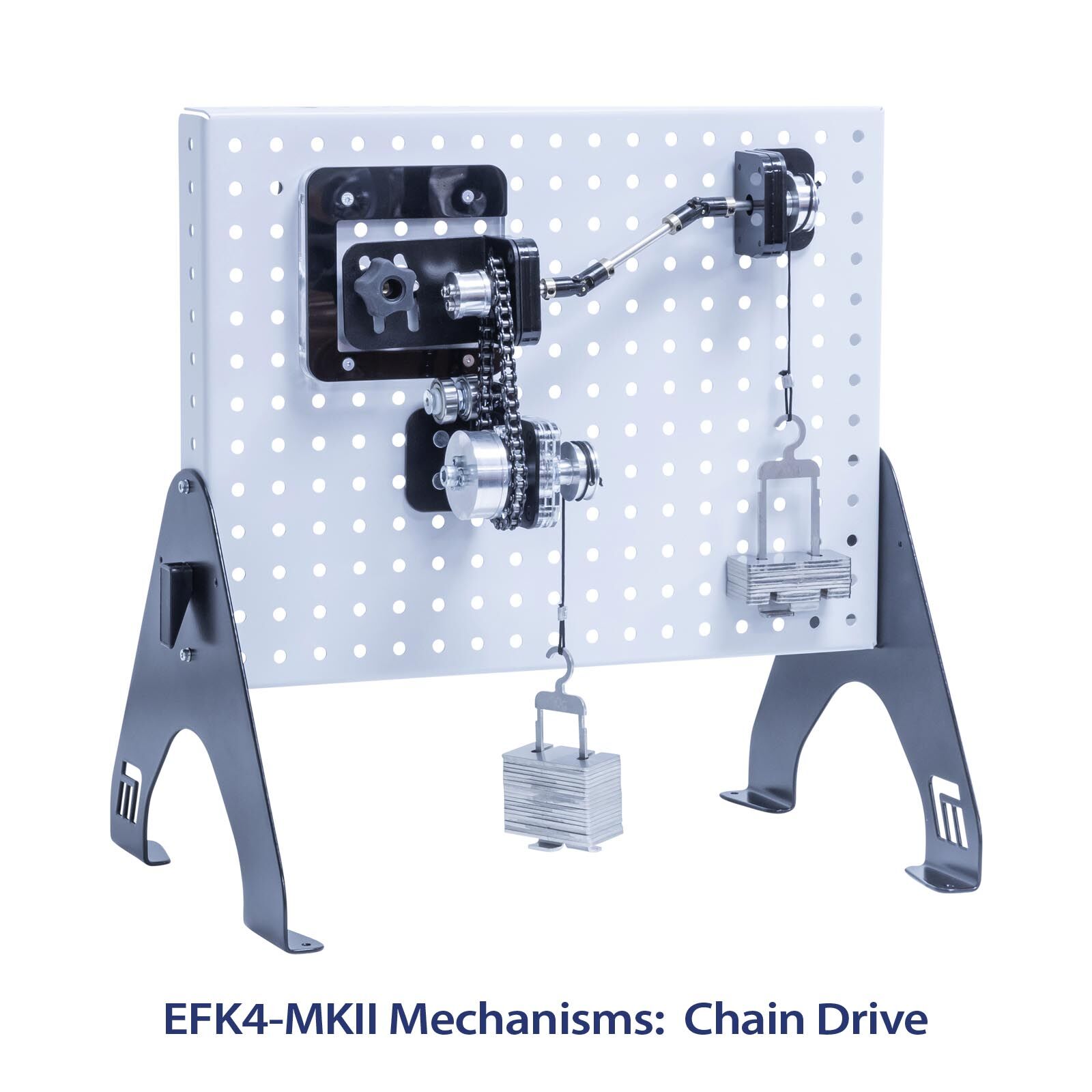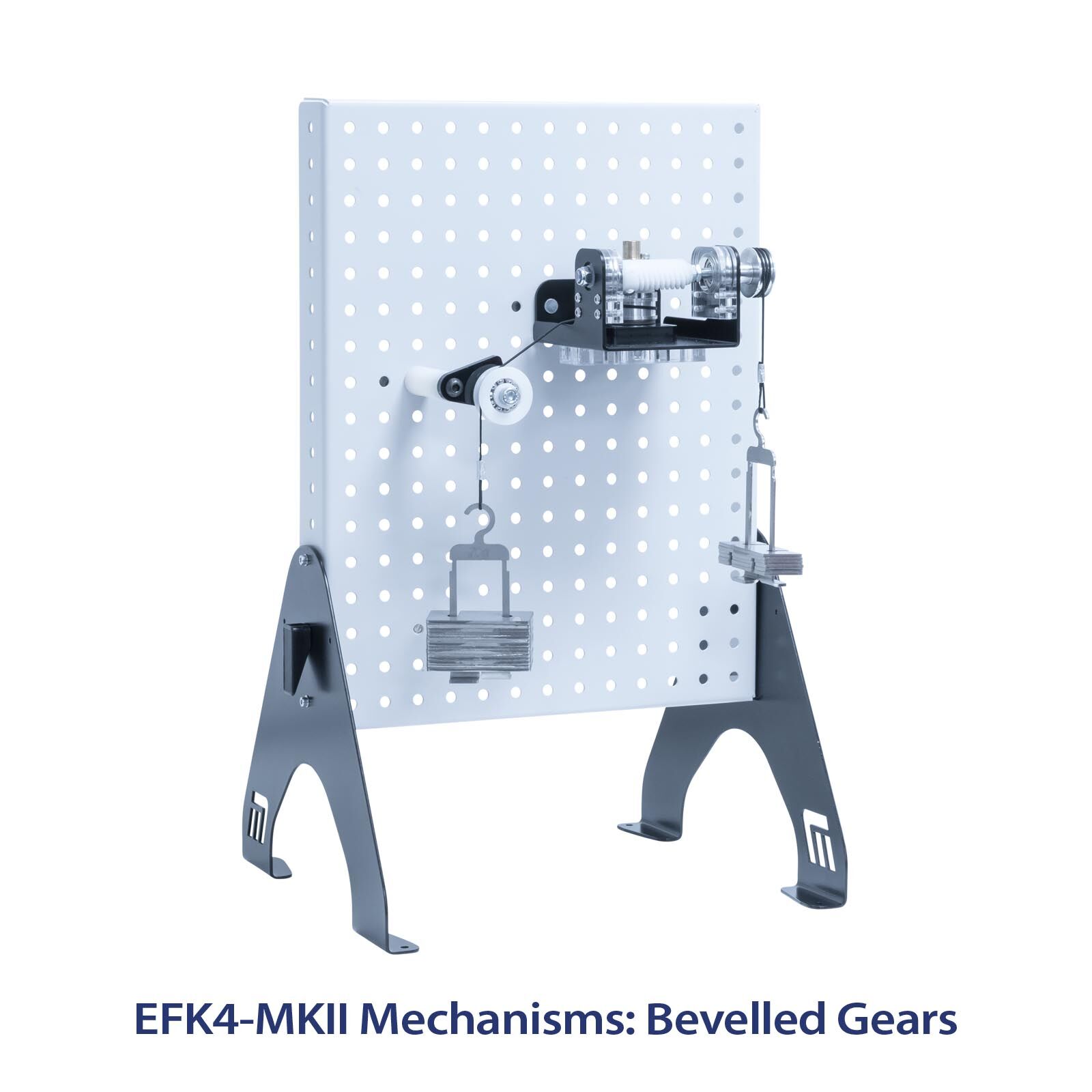EFK4-MKII Mechanisms Kit
The Engineering Fundamentals EFK4-MKII Mechanisms fundamentals kit is designed to enable students to gain an understanding of the fundamentals of engineering by the process of learning via hands-on experimentation.
Practical experience allows students to see the real-world application of theoretical knowledge, leading to a deeper and more comprehensive understanding of engineering principles.
The modular kit is supplied in conjunction with a multifunctional base unit enabling the student to conduct their own experiments in subjects such as Gears, Cranks, Cams and Drive Systems.
Each kit is supplied with a highly visual user-friendly operational guide, enabling the student to understand the theory of the subject by the application of practical experimentation.
EFK4-MKII Mechanisms Fundamentals Kit
Description
he Engineering Fundamentals EFK4-MKII Mechanisms fundamentals kit is designed to enable students to gain an understanding of the fundamentals of engineering by the process of learning via hands-on experimentation.
Practical experience allows students to see the real-world application of theoretical knowledge, leading to a deeper and more comprehensive understanding of engineering principles.
The modular kit is supplied in conjunction with a multifunctional base unit enabling the student to conduct their own experiments in subjects such as Gears, Cranks, Cams and Drive Systems.
Each kit is supplied with a highly visual user-friendly operational guide, enabling the student to understand the theory of the subject by the application of practical experimentation
Bundled Learning For:
- STEM Education
- National Vocational Qualifications
- High Schools & Technical Colleges
- University Foundation Degrees
Topics Covered:
- Gears
- Cranks
- Cams
- Drive Systems
Technical Specifications
- Gear 1 – Small Shaft 1
- Gear 2 – Mid Shaft 1
- Gear 3 – Large Shaft 1
- Rack Gear 1
- Bevel Gear 1
- Worm Gear 1
- Crank 1
- Cam 1
- Screw Jack Adapter 1
- Screw Jack Weights 1
- Universal Joint Shafts 1
- Large Sprocket 1
- Roller Tensioner 1
- Slider Plate 1
- Tray Lid 1
- Deep tray 1
- Work Panel for Fundamentals 1
- 5g plastic weight 4
- Square hanger stem 3
- Crank Angle Indicator 1
- A1 ruler – 15cm 1
- Spring balance mounting plate 1
- Spring Balance Pillar 1
- Balance Slider Plate Assembly 1
- Salter 12 spring balance 10N x 0.1N 1
- Foam cut outs for the FM0759 kit 1
- Long Adjustable Pulley Assembly 1
Features & Benefits
Features
- Neatly presented in an easily identifiable and durable storage tray
- Trays have clear lids making it easy to see their contents.
- Accompanied by a detailed manual, including Student handouts and teachers notes with various practical exercises.
- Clear and concise assembly instructions for each experiment
- Multiple experiments per kit
- Toolless assembly
Benefits
- Enhanced Understanding of Concepts:
- Improved Problem-Solving Skills:
- Engagement and Motivation:
- Teamwork and Communication:
Contains one of each of the EFK4-MKII Mechanisms Fundamentals Kit
EFK4-MKII Mechanisms Fundamentals Kit
- EFK4-MKII Spur Gear
- EFK4-MKII Compound Gear
- EFK4-MKII Bevelled Gears
- EFK4-MKII Worm Gears
- EFK4-MKII Rack and Pinion
- EFK4-MKII Screw Jack Bevelled Gear Jack
- EFK4-MKII Jack Worm Gear
- EFK4-MKII Tangent Cam
- EFK4-MKII Eccentric Cam
- EFK4-MKII Snail Cam
- EFK4-MKII Chain Drive
- EFK4-MKII Belt Drive
Educational Content:
- Gears (Mechanical Advantage (MA), Efficiency and Gear Ratio):
- Simple Gear
- Compound Gear
- Rack & Pinion Gear
- Bevel Gear
- Worm Gear
- Screw Jack
- Cams (Displacement Analysis):
- Tangent Cam
- Snail Cam
- Eccentric Cam
- Crank (Force and Displacement Analysis)
- Drive System (MA, Efficiency and Gear Ratio)
- Universal Joint
- Belt Transmission
- Chain Transmission
- EFK1-MKII Statics Fundamentals Kit
- EFK2-MKII Dynamics Fundamentals Kit
- EFK6-MKII Materials Fundamentals Kit
EFK4-MKII base unit with stand on which to build the experiment from the tray components (One base unit is supplied)
PACKED AND CRATED SHIPPING SPECIFICATIONS
Volume: 0.073m³ per tray
Gross Weight: 11kg
EFK4-MKII
